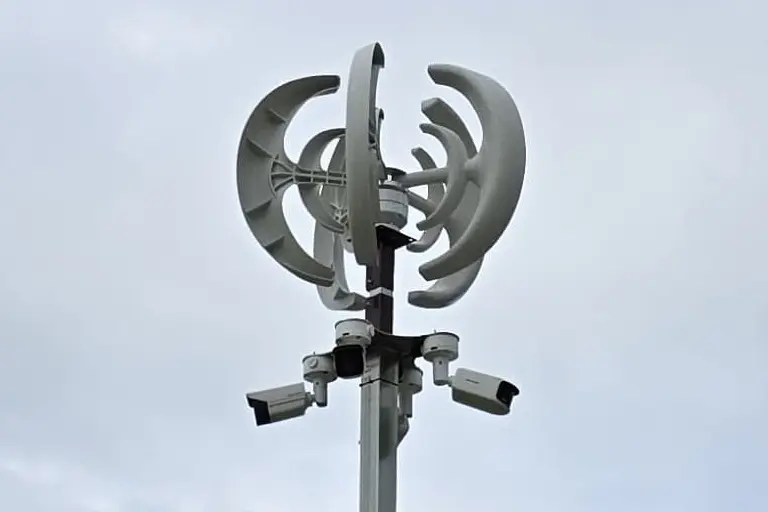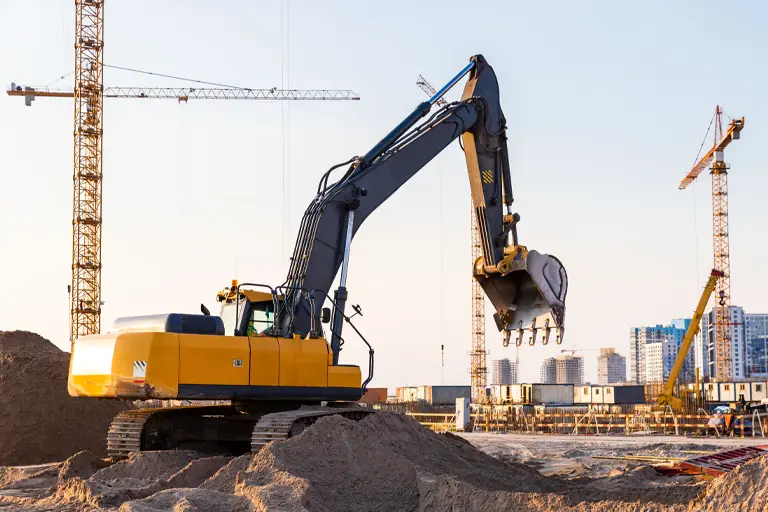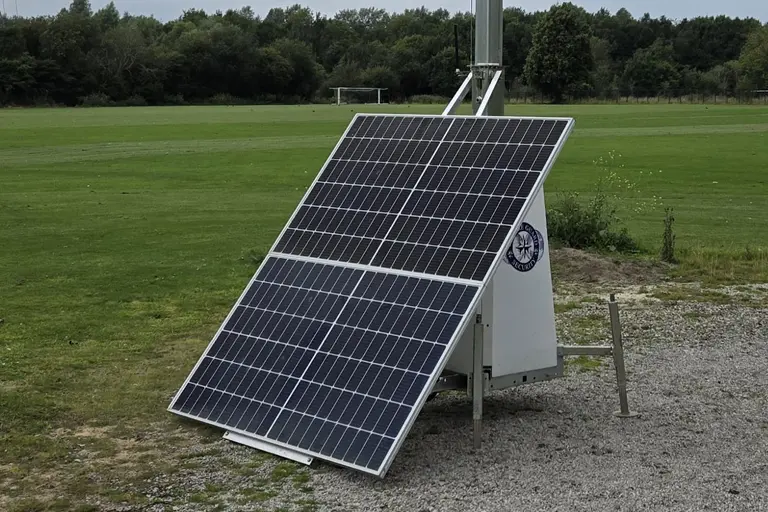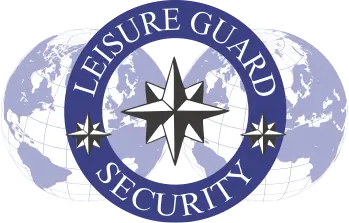From theft and vandalism to safety and compliance, here’s what every site manager needs to know to secure their construction project.
Construction sites are magnets for crime. With high-value equipment, open perimeters, and fluctuating personnel, they present a prime opportunity for theft, vandalism, and unauthorised access.
According to industry reports, UK construction sites lose over £800 million a year to crime-related incidents, and that doesn’t include project delays, increased insurance premiums, or reputational damage.
Whether you’re a project manager, site owner, or developer, one question remains critical to your operation’s success and safety:
What security is needed on a construction site?
The answer depends on your site’s size, location, risk profile, and working hours, but one thing is certain: security is no longer optional. It’s an essential layer of site management that protects not just assets, but people and progress.
In this article, we’ll explore:
- The most common threats to construction sites
- The types of security systems available
- How to assess your site’s needs
- The role of professional guarding, CCTV, access control, and perimeter solutions
- A cost-benefit breakdown of doing security right vs. getting it wrong
Let’s start with the threats you’re up against.
Common Security Threats on Construction Sites
Construction sites face a wide range of security risks, many of which occur outside working hours when sites are unsupervised. The nature of these threats can vary depending on location, the value of equipment stored on-site, and the visibility of the site to the public.
Below are the most common security threats construction sites face:
- Theft of Tools, Plant & Materials
Construction tools and machinery are high-value targets, easy to resell and often left unsecured overnight.
- Power tools, generators, and small machinery are stolen most frequently
- Copper wiring, scaffolding, and fuel are also popular targets
- Organised gangs often scope out sites in advance
- Vandalism and Arson
Deliberate damage to partially built structures, equipment, or vehicles is not only expensive but also dangerous.
- Sites may be vandalised by local youths or opportunists
- Arson can halt projects entirely and trigger insurance investigations
- Unauthorised Access & Trespassing
Open or poorly secured sites attract trespassers, which could result in injury or legal liability.
- Children may enter for exploration or mischief
- Homeless individuals may seek temporary shelter
- Vandals and thieves often test for weak spots at night
- Health & Safety Risks from Intruders
Intruders can unintentionally trigger hazards, leave equipment in dangerous states, or suffer injuries, creating significant liability risks for site operators.
- Unsupervised use of equipment
- Tampering with scaffolding or tools
- Falls from height or exposed trenches
- Internal Theft and Access Abuse
Not all theft happens after hours. Unmonitored access for subcontractors, delivery drivers, and temporary labour increases the risk of theft from within.
- Lack of ID or access control systems
- Unregistered staff on site
- Poor asset tracking and inventory management
Read our article: Why construction site security is an investment, not a cost.
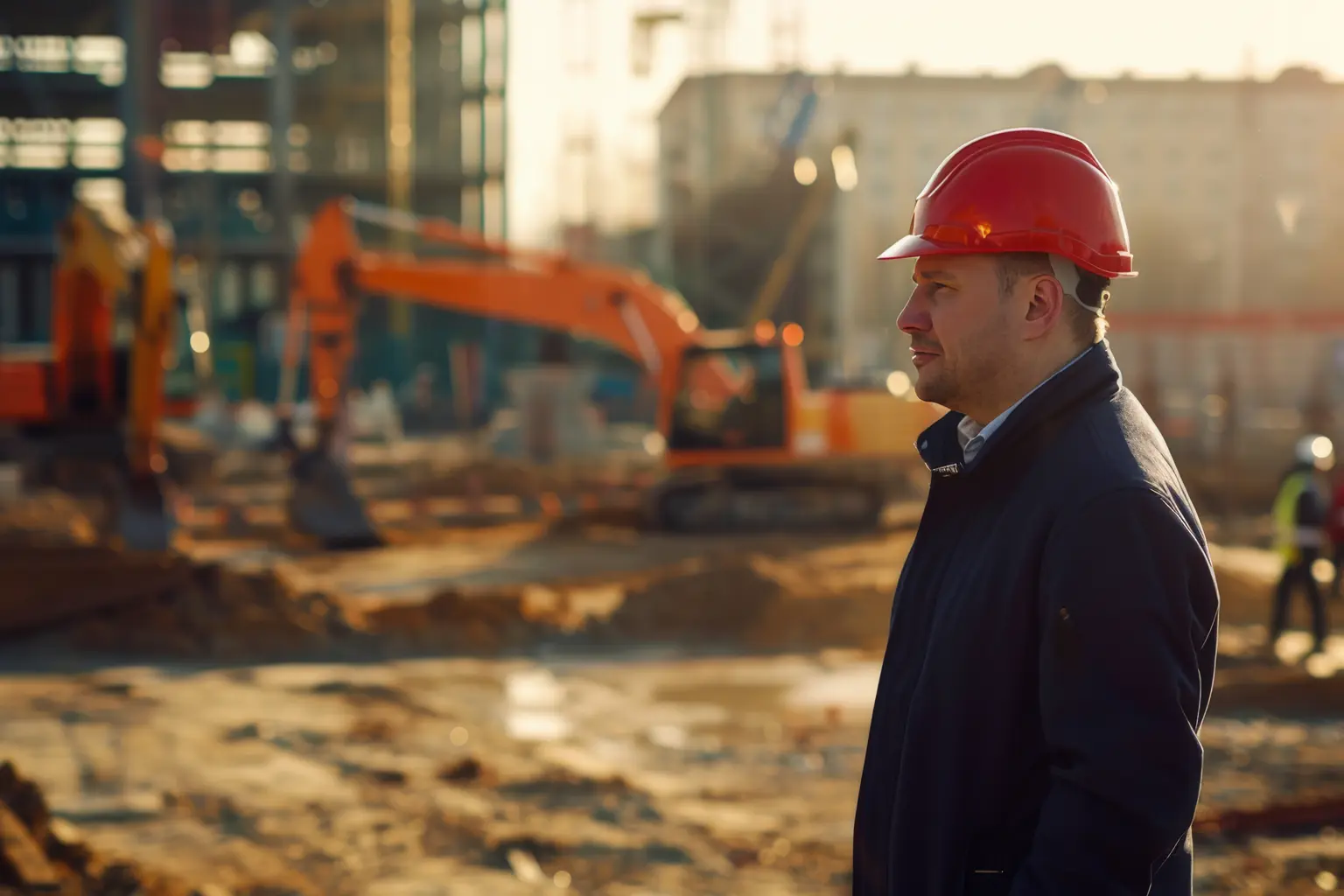
Here’s a quick overview of the top threats and their potential consequences:
| Threat Type | Description | Potential Impact |
|---|---|---|
| Tool & Equipment Theft | Power tools, small plant, fuel, metals stolen | £1,000s in losses, project delays |
| Vandalism & Arson | Deliberate damage or fire-setting | Insurance claims, reputational damage |
| Trespassing | Unauthorised entry, often by children or homeless persons | Legal liability, injury risk |
| Internal Theft | On-site theft by staff or contractors | Inventory shrinkage, loss of trust |
| Safety Compromise | Hazards caused by intruders or tampering | Serious injury, HSE fines |
Security threats are not just about property loss, they’re about project disruption, legal risk, and reputation. Knowing what you’re up against is the first step in building a robust protection plan.
Assessing Your Site’s Risk Profile
Security threats are not just about property loss, they’re about project disruption, legal risk, and reputation. Knowing what you’re up against is the first step in building a robust protection plan.
Key Factors That Influence Security Needs
Site Location
- Is the area known for theft, vandalism, or anti-social behaviour?
- Is it rural, urban, or industrial?
- Are there public footpaths, schools, or housing nearby?
Project Type and Scale
- Is this a long-term development or a short-term renovation?
- Are high-value materials or specialist equipment present?
How many access points and entry zones exist?
Visibility and Perimeter
- Can the site be easily seen from the road or public areas?
- Are there solid barriers in place, or temporary fencing?
Working Hours
- Are there night shifts or is the site left unattended after hours?
- Are materials or machinery left unsecured overnight?
Staff and Contractor Turnover
- How many subcontractors or third parties access the site?
- Is there a process for checking IDs and managing site entry?
Previous Incidents
- Have there been previous thefts, break-ins, or trespassing reports?
- Are there insurance claims or police reports tied to the location?
Read our article: Why construction site security is more important than ever.
Site Risk Assessment Table
| Factor | Low Risk | High Risk |
|---|---|---|
| Location | Rural / remote with low crime | Urban / known crime hotspots |
| Project Value | Small refurbishment (<£50K) | Large multi-phase development (>£1M) |
| Equipment & Materials | Limited on-site storage | High-value plant, tools, metals, fuel |
| Hours of Operation | Daytime only, secure lock-up at night | Unsupervised nights, frequent deliveries |
| Perimeter Protection | Full fencing, gates, lighting | Open boundaries, gaps in fencing |
| Access Control | ID system, sign-in logs | No ID checks, open access for contractors |
| Incident History | No previous incidents | Recent or frequent theft, trespass, vandalism |
How to Use This Assessment
Tally your site’s characteristics. If you score mostly in the High Risk column, your site will require a multi-layered security solution, including monitored CCTV, manned guarding, access control, and real-time reporting.
Even low-risk sites can become targets if left unmonitored for long periods or during key stages of construction.
Next, we’ll explore the most effective physical and technological measures to secure a construction site.
Layers of Construction Site Security
Effective construction site security isn’t about a single solution, it’s about creating layers of protection that deter intruders, detect incidents early, and provide rapid response when needed.
This layered approach is often referred to as “defence in depth”, where each security measure supports and reinforces the others. The stronger and more integrated the layers, the harder it becomes for threats to break through.
The 5 Layers of Construction Site Security
Each layer adds a crucial function, from deterring intruders at the outer edge to identifying internal risks and enabling fast response.
Perimeter Security (Deterrence)
The first line of defence. This includes fencing, barriers, gates, and lighting to physically and visually deter unauthorised access.
Surveillance (Detection)
CCTV systems, towers, and motion sensors provide 24/7 monitoring, record evidence, and alert teams to activity on-site.
Access Control (Regulation)
Managing who can enter and exit the site, when, and how. Includes ID verification, turnstiles, sign-in systems, and vehicle access control.
Physical Security Presence (Intervention)
Manned guards and mobile patrols who can investigate suspicious behaviour, respond to alarms, and interact with intruders in real time.
Incident Management & Reporting (Response)
Clear procedures, digital reporting tools, and audit trails that ensure fast, compliant responses to incidents, critical for insurance claims and legal protection.
Read our article: The growing crisis of construction site theft.
Security Layer Overview Table
| Security Layer | Primary Function | Example Solutions |
|---|---|---|
| Perimeter Security | Deter intruders | Fencing, gates, hoarding, lighting |
| Surveillance | Detect activity and gather evidence | CCTV towers, motion sensors, remote monitoring |
| Access Control | Regulate who enters/exits | Turnstiles, ID badges, digital check-in systems |
| Physical Presence | Investigate and intervene | Manned guards, dog units, mobile patrols |
| Incident Management & Reporting | Respond and document | Alarm protocols, digital logs, site reports |
Why Layering Matters
Think of each layer as part of a chain. Remove one, and the others become weaker.
For example:
- CCTV is far less effective if your perimeter is open.
- Guards are limited if they can’t control access points.
- A strong deterrent loses value without a way to record or respond.
By combining layers, you create a site that is hard to access, easy to monitor, and fast to protect.
In the next section, we’ll explore the first layer in detail: Perimeter Security, including fencing types, lighting, barriers, and common vulnerabilities.
Ready to Secure Your Construction Site the Smart Way?
Whether you’re managing a construction project, protecting vacant property, or securing remote infrastructure — Tower Guard delivers instant, intelligent protection without compromise.
24/7 surveillance
No power or internet needed
Rapid deployment across the UK
Live monitoring, audio deterrents & full compliance support
Don’t wait for a break-in to take action.
Perimeter Security Measures
The perimeter is your first and most visible line of defence. A well-secured perimeter acts as a strong psychological and physical deterrent to intruders and can stop most threats before they even reach your equipment or materials.
If your site boundary is weak, poorly lit, or has gaps, you’ve already invited trouble.
Key Perimeter Security Components
- Fencing and Hoarding
- Temporary Mesh Fencing: Quick to install, ideal for short-term jobs
- Timber Hoarding: More robust and private; reduces visibility from the street
- Steel Anti-Climb Fencing: High security, long-term builds, especially in urban areas
Use fence couplers and base blocks to reduce tampering. Don’t leave open sections during the day.
- Gates and Access Points
- Install lockable swing gates or sliding gates
- Use padlocks, chains, and access logs
- Ensure all entry points are visible to CCTV or guard patrols
Access points are the weakest part of any perimeter. Control them like a vault.
- Lighting
- Install motion-activated floodlights near entry zones and blind spots
- Keep lighting consistent after hours to eliminate hiding places
- Consider solar-powered lighting for sites without mains access
Light deters and reveals. Darkness invites damage.
- Signage
- Warning signs indicating CCTV, security patrols, and restricted access
- Mandatory by law on certain sites under CDM Regulations
- Signs reduce opportunistic threats and support legal action if trespassing occurs
Visible signs are cheap but powerful deterrents.
Perimeter Security Comparison Table
| Component | Cost Level | Installation Time | Best Use Case | Deterrent Strength |
|---|---|---|---|---|
| Temporary Fencing | £ | Fast | Short projects, rural areas | Moderate |
| Timber Hoarding | ££ | Moderate | Privacy-sensitive or urban environments | High |
| Steel Fencing | £££ | Moderate | High-risk, long-term projects | Very High |
| Motion Lighting | ££ | Fast | Entry points and dark corners | High |
| Security Signage | £ | Immediate | All sites | Medium |
Common Perimeter Weak Points
- Gaps in fencing for deliveries or machinery
- Unlocked gates at night
- Poor visibility from roads or neighbouring properties
- Lack of lighting or blind spots
- No signage indicating security presence
Pro Tip: Audit your perimeter weekly.
Temporary sites change constantly, so should your checks. Document every inspection and rectify issues fast.
Next, we’ll dive into Surveillance and CCTV Systems, including mobile CCTV towers, motion detection, and how video can stop crime before it starts.
Surveillance and CCTV Systems
While perimeter measures keep intruders out, surveillance systems make sure they’re seen. Modern CCTV is not just about recording, it’s about detection, deterrence, and live intervention.
Sites with visible CCTV are far less likely to be targeted. But not all systems are created equal, and choosing the right surveillance setup depends on your project’s size, risk profile, and budget.
Why Surveillance Matters
- Deters intruders before they act
- Monitors vulnerable areas 24/7
- Captures footage for police and insurance
- Enables real-time alerts to security teams or response units
Key Surveillance Options for Construction Sites
Mobile CCTV Towers
- Solar- or generator-powered
- 360° panoramic view with pan–tilt–zoom (PTZ) cameras
- Motion detection and live alerts to a monitoring centre
- Built for rapid deployment and relocation
Perfect for sites with no mains power or high visibility needs.
Fixed CCTV Systems
- Installed on cabins, poles, or buildings
- Useful for long-term, stable projects
- May require wired power and network access
Best for large projects with infrastructure already in place.
Motion Detection & AI Analytics
- Sends real-time alerts when movement is detected
- Filters out wildlife or false positives using AI
- Can trigger audio warnings or lights
Prevention is better than playback. Smart systems act in the moment.
Remote Monitoring
- Live camera feeds sent to a control room or mobile app
- Operators can speak via tannoy, dispatch guards, or call police
- 24/7 coverage without permanent on-site staff
Think of it as your site’s virtual security guard.
Surveillance Options Comparison Table
| System Type | Power Source | Coverage | Best For | Cost |
|---|---|---|---|---|
| Mobile CCTV Tower | Solar / Generator | 360°, wide area | Remote or short-term projects | £££ |
| Fixed CCTV System | Mains powered | Targeted zones | Large, long-term developments | ££ |
| Motion Sensors & AI | Battery or hard-wired | Entry points | Smart alerts, false-alarm reduction | ££ |
| Remote Monitoring | N/A | All linked feeds | 24/7 protection with incident escalation | £££ |
Common Mistakes to Avoid
- No night vision: Some cameras become useless after dark
- Poor positioning: Cameras blocked by vehicles or structures
- No audio/tannoy: Can’t warn intruders before they act
- No live response: Recorded footage only helps after the damage
Pro Tip: Combine CCTV towers with motion-activated lighting to double the deterrent effect. Intruders don’t like being recorded, especially under a spotlight.
In the next section, we’ll cover Access Control Systems, from ID checks to digital logbooks and vehicle barriers, to regulate who gets in and when.
Ready to Secure Your Construction Site the Smart Way?
Whether you’re managing a construction project, protecting vacant property, or securing remote infrastructure — Tower Guard delivers instant, intelligent protection without compromise.
24/7 surveillance
No power or internet needed
Rapid deployment across the UK
Live monitoring, audio deterrents & full compliance support
Don’t wait for a break-in to take action.
Access Control Systems
You can’t protect what you don’t control, and on a busy construction site, that starts with knowing who is on site at any given time. Without a system in place, anyone could walk in, pose as a contractor, and walk off with thousands in equipment or materials.
Access control isn’t about inconvenience, it’s about accountability.
Why Access Control Is Critical
- Prevents unauthorised entry
- Reduces theft from within
- Ensures only qualified personnel are present
- Supports health & safety regulations
- Builds a digital audit trail for compliance and incident investigation
Types of Access Control Systems
Manual Check-In Systems
- Physical sign-in books or log sheets
- Used on smaller or low-risk sites
- Relies on trust and staff oversight
Simple, but easy to forge or forget.
Digital Sign-In & ID Badges
- Contractors register on arrival using tablets, QR codes, or ID cards
- Can track time on site, roles, and qualifications
- Supports induction tracking and GDPR compliance
Adds traceability and professionalism to site access.
Turnstiles and Access Barriers
- Full-height or waist-high gates that restrict entry
- Controlled via swipe cards, biometrics, or fobs
- Often paired with CCTV or entry intercoms
Stops tailgating and guarantees one-person-per-entry integrity.
Vehicle Access Control
- ANPR cameras to scan number plates
- Remotely operated gates and barriers
- Time-stamped logs of all entries and exits
Essential for high-traffic sites or where equipment deliveries are frequent.
| System Type | Ideal For | Benefits | Limitations |
|---|---|---|---|
| Manual Sign-In Sheets | Small, low-risk projects | Low cost, simple to implement | No verification or digital records |
| Digital Sign-In Systems | Medium-to-large sites | Traceability, audit trail, compliance support | Requires setup and internet access |
| ID Badges & QR Codes | All sites with multiple teams | Fast check-in/out, role-based access | Cards can be lost or swapped |
| Turnstiles & Gates | High-risk or long-term builds | Restricts physical access, deters intruders | Higher cost and install time |
| Vehicle Entry Control | Sites with frequent deliveries | Tracks vehicle access and delivery timings | Requires camera infrastructure |
Best Practices for Access Control
- Always verify identity before entry
- Use digital check-ins over manual logs when possible
- Link sign-in data to your health & safety briefings
- Review logs weekly for anomalies or patterns
- Pair access control with CCTV for maximum effectiveness
Why It Matters:
Unauthorised access isn’t just a security issue, it’s a liability. If someone is injured on-site and isn’t meant to be there, you could be held responsible. Proper access control reduces risk, protects workers, and ensures only the right people are in the right places.
Next up: Manned Guarding and Mobile Patrols, we’ll explore when physical security presence is essential, what guards actually do, and how to maximise value from security personnel.
Manned Guarding and Mobile Patrols
While CCTV and access control provide excellent deterrence and visibility, there are times when only a real human presence can protect your site effectively.
Whether it’s responding to an alarm, preventing theft in progress, or helping enforce site rules, manned guarding and mobile patrols provide a flexible, on-the-ground layer of security.
Benefits of On-Site Security Personnel
Rapid Response to Incidents
- Guards can investigate alarms, intrusions, or unauthorised access immediately
- Faster response than relying solely on police or remote monitoring
- Prevent escalation and secure the scene until further help arrives
Visible Deterrence
- Uniformed guards deter criminals simply by being present
- Their presence sends a message that the site is professionally managed
Health & Safety Support
- Guards can perform site inductions, visitor check-ins, and safety briefings
- Trained personnel can assist in emergencies (fire, medical, evacuation)
Out-of-Hours Protection
- Overnight patrols ensure the site remains secure when workers are gone
- Ideal for projects with high-value tools or no perimeter lighting
Mobile Patrols vs. Static Guards
Not every site requires a full-time static guard. In many cases, mobile patrols (shared guards who check in on multiple sites) offer a cost-effective alternative.
| Service Type | Static Guarding | Mobile Patrols |
|---|---|---|
| Presence | Full-time on-site | Scheduled/random visits (day/night) |
| Best For | High-value or high-risk sites | Medium-risk or lower-budget projects |
| Response Time | Immediate | Delayed (based on patrol route) |
| Cost | £££ | £–££ |
| Duties | Full coverage + access control | Perimeter checks, lock-ups, incident reports |
Duties of a Construction Site Security Guard
A professional construction guard may be responsible for:
- Monitoring CCTV feeds and alarms
- Logging all site visitors and deliveries
- Inspecting fences, gates, and vulnerable areas
- Performing lock/unlock procedures
- Challenging trespassers or suspicious activity
- Maintaining incident reports and daily logs
- Enforcing safety rules (e.g. PPE usage)
👷 Qualifications and Licensing
In the UK, security guards must hold a valid SIA (Security Industry Authority) licence to legally work on site. Additional training may include:
- First aid
- Fire marshal certification
- Conflict resolution
- Health and safety awareness
Pro Tip: Combine manned guarding with CCTV towers and access control for layered coverage. While tech sees everything, guards act on it, fast.
In the next section, we’ll look at Incident Reporting and Compliance, including why documentation is just as important as deterrence when it comes to insurance claims, legal protection, and peace of mind.
Incident Reporting and Compliance
You can have the best security setup in the world, but if you can’t prove what happened, or what actions you took, it may not count.
Construction site security is not just about deterrence and detection. It’s also about documenting every incident, inspection, and response, especially when insurers, clients, or legal teams come knocking.
Why Documentation Matters
- Insurance Claims: Most insurers require evidence of site inspections, security measures, and incident response.
- Legal Protection: In the event of injury, trespass, or internal theft, detailed logs can protect your business.
- Regulatory Compliance: Under CDM regulations and health & safety law, you must demonstrate due diligence in protecting workers and the public.
- Client Reporting: Developers and main contractors often require regular reports as part of their risk management obligations.
Tools and Methods for Reporting
Digital Incident Reporting Apps
- Log incidents via mobile device with time, date, location, photos, and narrative
- Upload to a secure dashboard accessible to management and clients
- Can be customised for routine patrols, alarms, visitor logs, and more
Creates a real-time, shareable audit trail.
Manual Logbooks
- Still used on some small sites
- Harder to search, share, or verify
- Prone to loss or human error
Acceptable in low-risk situations, but increasingly outdated.
Integrated Guard & CCTV Reporting
- Guards log inspections, check-ins, and incidents directly from mobile devices
- Synced with footage from CCTV towers for full transparency
Provides hard evidence to support every logged incident.
Reporting Tools Comparison Table
| Tool Type | Best For | Strengths | Weaknesses |
|---|---|---|---|
| Digital Reporting App | Medium–large sites | Real-time logs, photo evidence, shareable | Requires smartphones and training |
| Manual Logbook | Small sites or backup | Simple to implement | Hard to verify or analyse |
| Integrated Guard/CCTV Logs | High-risk or high-value sites | Verified events with time-stamped video | Requires multiple systems to align |
What Should Be Logged?
A robust incident and compliance log should include:
- Daily security patrol reports
- Equipment and tool checks
- Visitor sign-in/out logs
- Access attempts or intrusions
- Tampered or breached areas
- CCTV footage linked to events
- Health & safety observations
- Response actions taken (e.g. lockdown, police callout)
Pro Tip: Every inspection, even if nothing happens, is evidence of due diligence.
Insurers don’t pay claims based on what you meant to do, only what you can prove.
Next, we’ll move to the final section:
Cost vs. Investment, Why Security Pays for Itself, where we’ll look at real-world loss scenarios and break down how good security prevents far more expensive problems.
Cost vs. Investment – Why Security Pays for Itself
It’s tempting to treat security as a “nice to have”, something to cut when budgets are tight. But when you look at the true cost of theft, vandalism, and downtime, investing in security becomes the smarter, cheaper option.
Put simply:
Construction site security doesn’t cost you money, it saves it.
Real-World Consequences of Poor Security
Without Proper Protection:
- £5,000–£30,000 lost in tool and plant theft
- Delays of 1–3 weeks waiting for replacements or insurance processes
- Higher insurance premiums or rejected claims due to missing documentation
- Reputational damage with clients or funders
- Injury or death if intruders tamper with hazardous areas
Even one successful break-in can outweigh a year of proactive security investment.
Example Cost Comparison Table
| Security Scenario | Estimated Cost | Notes |
|---|---|---|
| Mobile CCTV Tower (Monthly) | £800 – £1,200 | Includes remote monitoring and alerts |
| Manned Guard (Per Day) | £120 – £200 | Day or night presence |
| Digital Reporting System (Monthly) | £50 – £150 | Includes incident logging and site checks |
| One Break-In (Tool Theft & Damage) | £15,000 – £30,000 | Includes tool loss, damage, delays, insurance gaps |
| Vandalism/Arson Cleanup | £10,000 – £60,000+ | Depending on materials and phase of build |
| Rejected Insurance Claim | Full cost borne by client | Often due to no proof of inspections |
Long-Term Value of Proactive Security
Security is not just about stopping crime, it also:
- Keeps your project on schedule
- Reduces liability risk
- Improves site safety culture
- Increases client trust and credibility
- Ensures insurance compliance
- Protects your bottom line
Pro Tip: Bundle security services into your tender or budget proposal early.
When security is planned from day one, it’s cheaper, more integrated, and more effective.
What Security Is Needed on a Construction Site?
From tool theft and vandalism to legal liability and insurance losses, the risks facing construction sites are growing, and so is the cost of doing nothing.
So, what security is needed on a construction site?
It depends on your site’s size, location, and risk profile, but the most effective approach always includes multiple layers of protection:
✅ A secure and visible perimeter
✅ Reliable CCTV surveillance with remote monitoring
✅ Clear and traceable access control
✅ Professional manned guarding or mobile patrols
✅ Real-time incident reporting for full compliance
If you’re still relying on fences and good luck, it’s time to reframe how you see security. This isn’t a tick-box exercise, it’s a strategic investment in your project’s safety, schedule, and success.
Ready to Protect Your Site?
Leisure Guard Security provides comprehensive construction site security solutions tailored to your exact needs. From rapid-deploy CCTV towers to licensed SIA guards and digital reporting tools, we’ve got every layer covered.
Construction Site Security FAQs
What security is needed on a construction site?
Construction site security should include perimeter fencing, CCTV surveillance, access control, manned guarding or mobile patrols, and a robust incident reporting system. The best results come from layering multiple security measures based on the site’s risk profile.
Why is construction site security important?
Construction sites are vulnerable to theft, vandalism, and unauthorised access. Proper security helps prevent loss, ensures legal compliance, protects workers and the public, and avoids costly project delays.
What is the most common crime on a construction site?
Theft is the most common crime, especially targeting power tools, copper wiring, fuel, and small machinery. Sites with poor perimeter control and no surveillance are most at risk.
How can CCTV help protect a construction site?
CCTV deters intruders, records evidence of incidents, and enables remote monitoring. Mobile CCTV towers are ideal for sites without mains power, providing 360° surveillance and real-time alerts.
Are manned security guards necessary on every site?
Not always. High-risk or high-value sites benefit from static guards, while others may only need mobile patrols at night. The right choice depends on your site’s threat level, location, and value of equipment on-site.
What kind of fencing is best for site security?
Steel anti-climb fencing offers the highest deterrent, especially in urban or high-crime areas. Timber hoarding is also effective and provides privacy. Temporary mesh fencing is suitable for low-risk or short-term builds.
How often should construction site inspections take place?
Security inspections should happen daily on active sites and at least nightly when unattended. Professional guards or patrols log these checks to maintain a secure audit trail for compliance and insurance.
Can poor security affect construction insurance claims?
Yes. Many insurers require proof of inspections, access control, and incident response. If you cannot show due diligence, your claim may be denied after theft, fire, or trespassing.
What is access control on a construction site?
Access control regulates who enters or exits your site. This can include ID checks, QR codes, digital sign-ins, turnstiles, or vehicle barriers. It helps prevent unauthorised entry and tracks all site activity.
What should be included in a site incident report?
Incident reports should include time/date, location, nature of the incident, any damage or injuries, response taken, photographic evidence, and follow-up actions. Digital reporting tools improve speed and reliability.
What’s the difference between static guards and mobile patrols?
Static guards stay on-site full-time and control access, monitor CCTV, and respond immediately. Mobile patrols visit multiple sites on a rotating schedule and are more affordable for lower-risk locations.
What are the legal responsibilities for construction site security?
Under CDM regulations and health & safety law, site operators must take reasonable steps to protect workers, the public, and property. Failing to do so may result in fines or prosecution if incidents occur.
How do you choose the right construction site security provider?
Look for providers with SIA-licensed staff, proven track records in the construction sector, live reporting tools, 24/7 support, and a tailored risk assessment process. Local presence and rapid response are also key.
What’s the best all-round security strategy for a construction site?
Use a layered approach: secure the perimeter, install CCTV, control access, employ guards or patrols, and maintain digital logs. Combine physical presence with smart tech to cover all bases.
